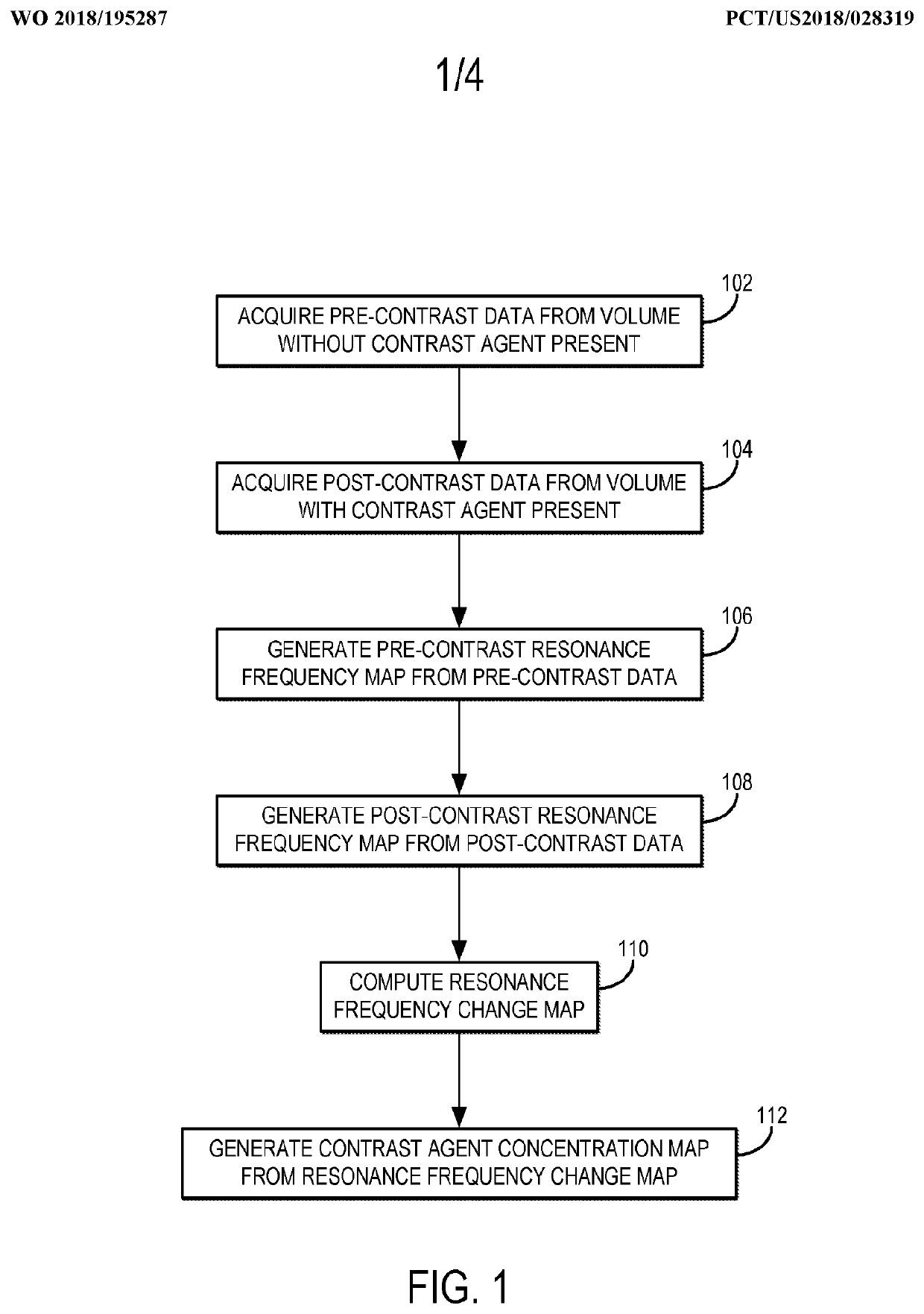Methods for Determining Contrast Agent Concentration Using Magnetic Resonance Imaging
a magnetic resonance imaging and contrast agent technology, applied in the direction of nmr measurement, instruments, applications, etc., can solve the problems of introducing errors and often both very rapid rates
- Summary
- Abstract
- Description
- Claims
- Application Information
AI Technical Summary
Benefits of technology
Problems solved by technology
Method used
Image
Examples
Embodiment Construction
[0023]Described here are methods for measuring or otherwise determining the concentration (e.g., the absolute concentration) of a contrast agent using magnetic resonance imaging (“MRI”). As stated above, contrast agents used in MRI typically change the relaxation rate of the spins that are proximate to the contrast agent. As one non-limiting example, the contrast agent can be a gadolinium (“Gd”) based contrast agent, which increases the longitudinal relaxation rate (R1), or decreases the longitudinal relaxation time (T1), of the surrounding spins, which may be hydrogen nuclei or other spins from which magnetic resonance signals are to be obtained. In other examples, the contrast agent can include other paramagnetic contrast agents (e.g., manganese based agents), superparamagnetic materials (e.g., superparamagnetic iron oxide based agents), or other contrast agents that affect the longitudinal relaxation, transverse relaxation, or both, of nuclear spins.
[0024]Rather than estimate the...
PUM
 Login to View More
Login to View More Abstract
Description
Claims
Application Information
 Login to View More
Login to View More - R&D
- Intellectual Property
- Life Sciences
- Materials
- Tech Scout
- Unparalleled Data Quality
- Higher Quality Content
- 60% Fewer Hallucinations
Browse by: Latest US Patents, China's latest patents, Technical Efficacy Thesaurus, Application Domain, Technology Topic, Popular Technical Reports.
© 2025 PatSnap. All rights reserved.Legal|Privacy policy|Modern Slavery Act Transparency Statement|Sitemap|About US| Contact US: help@patsnap.com



